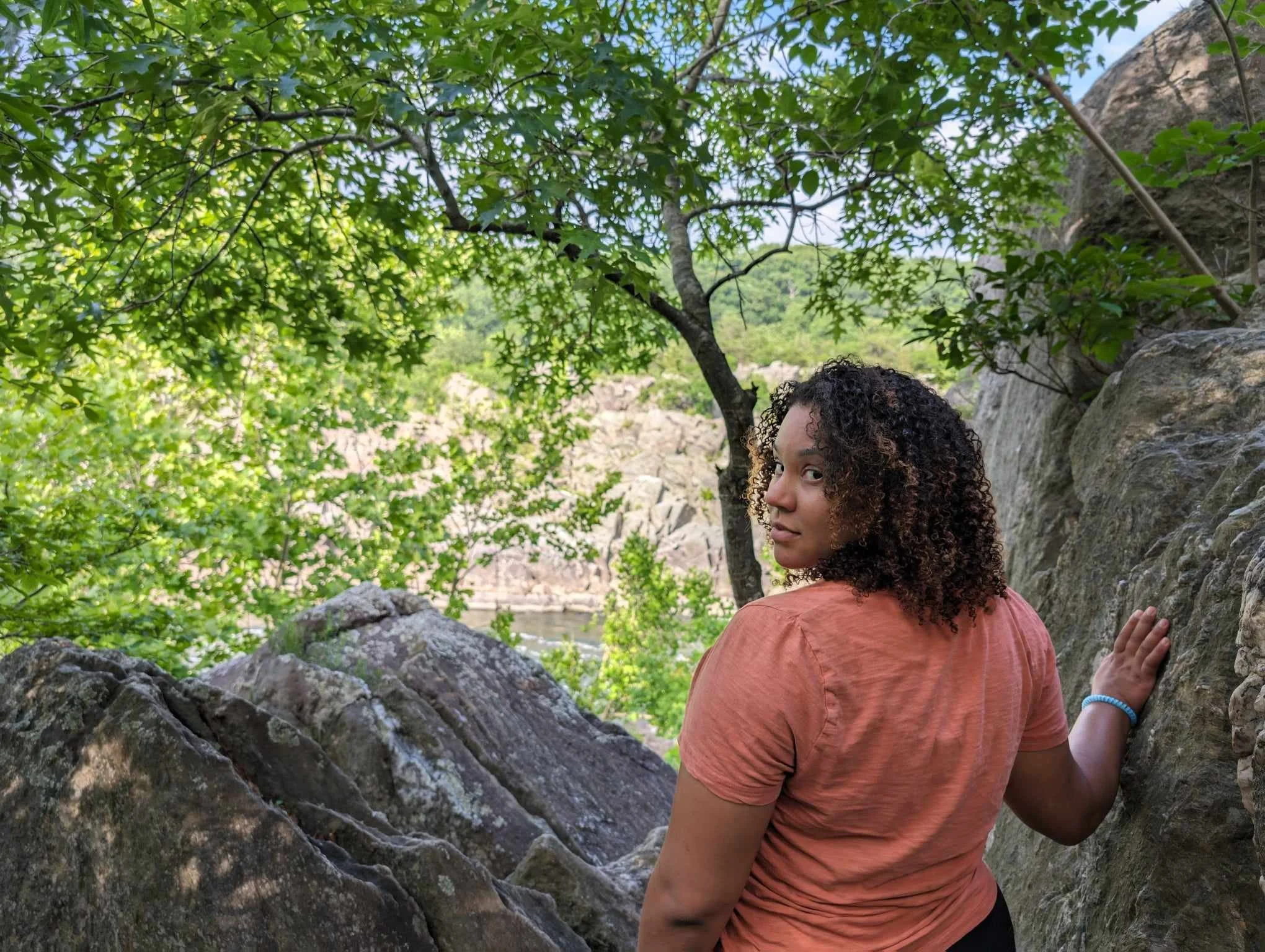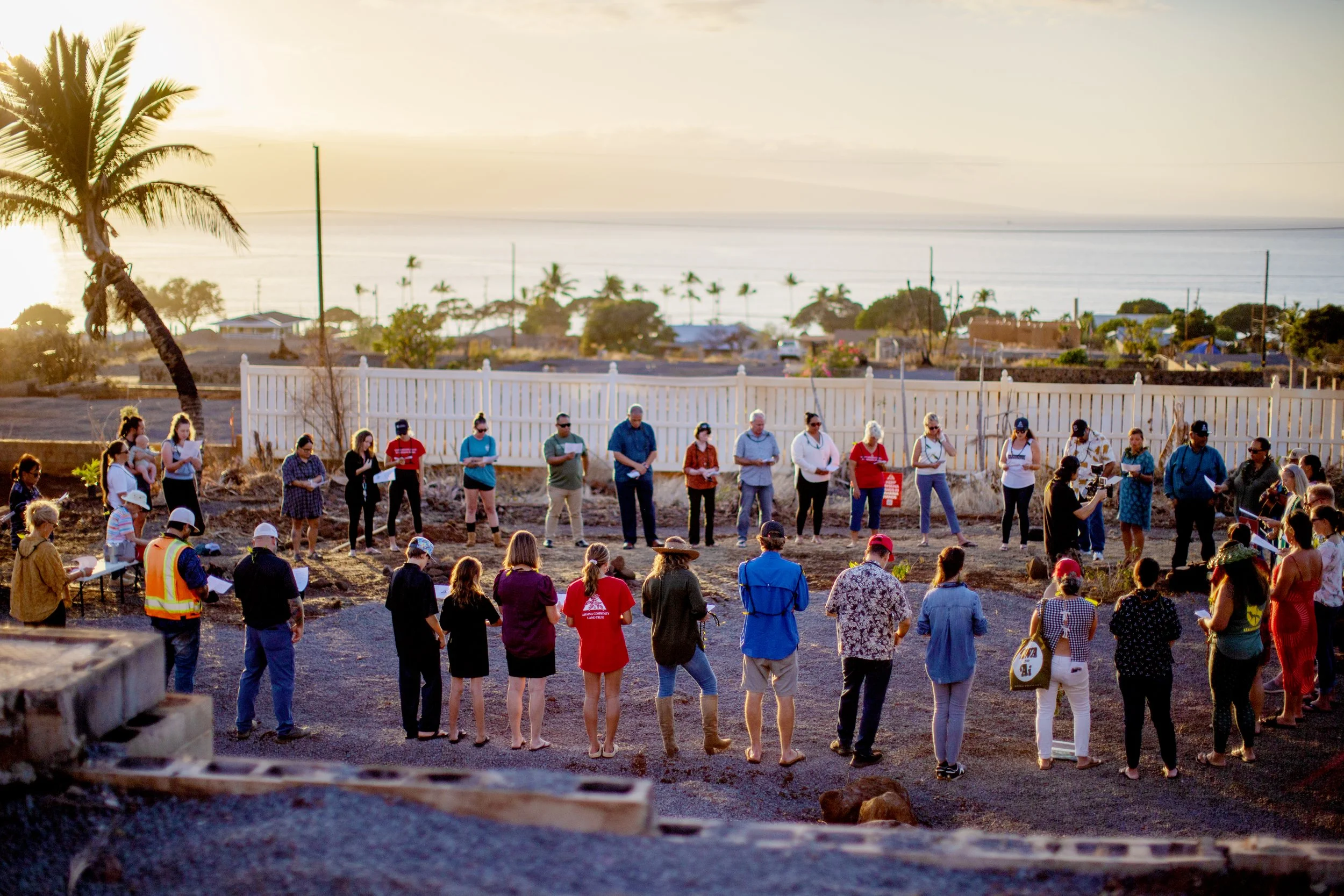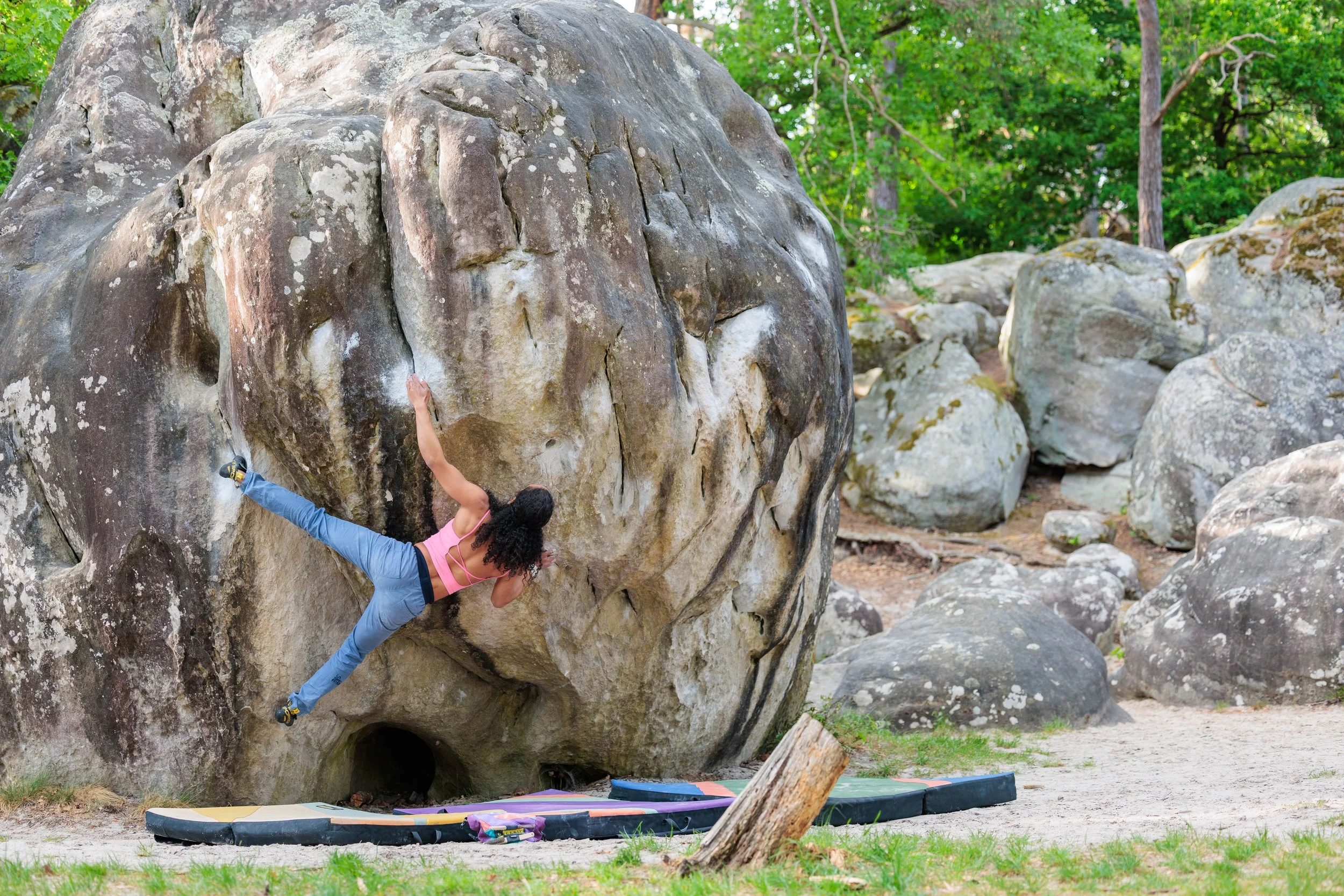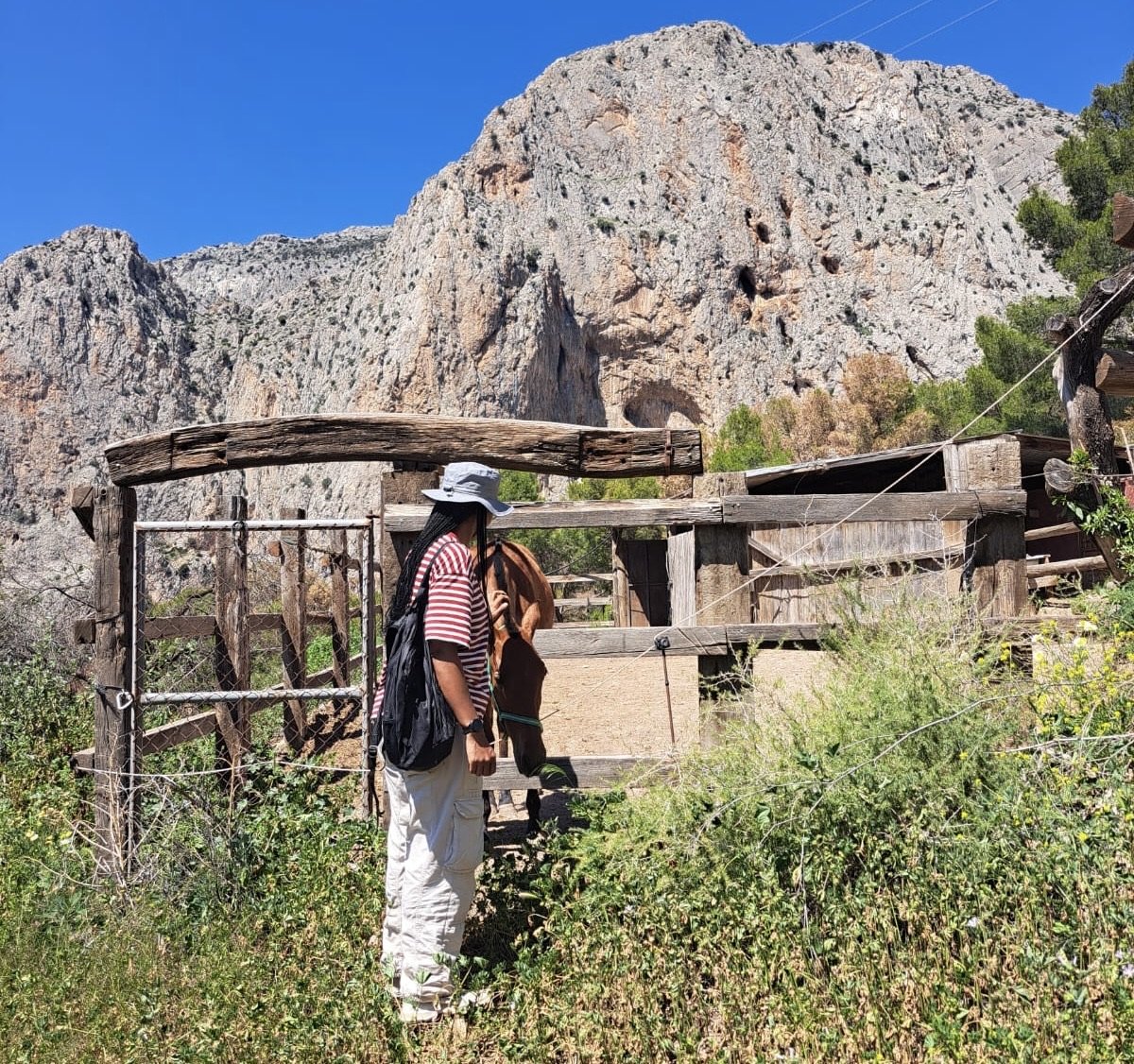Mountaineering Is Hard, But Failure Is Even Harder
Mid-way point up Middle Sister. Photo by: Nathan Kaul
When I hear the word “badass,” I immediately think of people doing epic things while making them look easy! When people tell me I’m a “badass,” I suddenly feel pressure to live up to their expectations. Failure is no longer an option. I have to climb harder grades, summit more peaks, higher peaks, harder peaks. I have to keep going at all costs. To be considered a badass, especially in the male dominated world of adventure sports, is a compliment; however, it comes with strings attached.
Cold and tired, while refueling. Photo by: Nathan Kaul
Can I tell you a secret? While I enjoy sharing climbing photos on social media, behind each smiling summit selfie is a more complicated reality. I feel fatigue and disappointment and exhaustion. Mountaineering is mentally exhausting! My most recent mountain climb up Middle Sister, located near Bend Oregon, demonstrated that mountaineering doesn’t come easy for me. Okay, I realize mountaineering doesn’t come easy for anyone. In fact, the mental challenge and physical demands are probably part of what draws people to the sport! However, I sometimes feel as if the odds of success are stacked against me.
I started mountainering in 2016. Since then I've climbed a handful of mountains to include Mt. Hood at 12,590’, Mt. Adams at 12,281’, South Sister at 10,358’ and Mt. McLoughlin at 9,493’. Early last year, I also climbed Mt. Ellinor at 5,944’, Old Snowy at 7,880’, and Three Finger Jack at 7,884’. And of course, my most recent climb of Middle Sister at 10,075’. But if I were completely honest—if I were to truly swallow my pride, I’d tell you that I’ve only been successful on half of those climbs.
Combing back down from Hell's Kitchen on Mt. Hood. Photo by: Nathan Kaul
An avid climber or even a Pacific Northwest local, might look at those elevation numbers and say to themselves, "those aren’t very hard!" And you know what, they'd be right. In the mountaineering world, they really aren’t that impressive. They aren’t overly technical, nor are they very high. In fact, I’ve seen people with very little to no experience successfully climb most, if not all of them.
But there's something they don't consider. I have an autoimmune illness called Raynaud’s syndrome. That means simple tasks, like putting on crampons and holding an ice axe are not simply uncomfortable in cold weather—they are challenging and beyond painful. This condition makes my hands and feet unbearably cold in even moderate temperatures, and once they are cold, it can take up to 45 minutes to warm them back up. Higher elevation compounds the effects of my illness. At altitude, even mild wind gusts cause my body to quickly restrict blood flow to my extremities in order to keep my core warm. The body's normal response to lower temperatures happens a lot faster when you have Raynaud's. It's an intelligent design, and as a public health professional, it makes sense. However, it's less than ideal while I need full use of my limbs on the mountain!
Yes, I come prepared. Unfortunately, activated hand, body, and foot warmers, two beanies, multiple insulating layers, and about six pairs of technical gloves—all of which claim they are the warmest gloves—aren't enough. Nothing is enough. And nothing is enough to keep me from climbing!
On Middle Sister with views of South Sister and Broken Top. Photo by: Nathan Kaul
Living with Raynaud's is challenging but it also gives me a sense of appreciation. I'm grateful to have the opportunity to climb and the funds to be able to afford technical gear. My illness also provides perspective; the mountain isn't just physically challenging. It's also mentally challenging. And every time I climb I'm battling my fear of falling.
On many of my climbs, I’ve come so close to the summit I can nearly reach out and touch the top. But why not just go for it if I’m so damn close? Let me count the reasons! I’ve turned around due to an unexpected blizzard and fast approaching storms. I’ve turned around due to toxic fumes from an active volcano. I’ve turned around because my group was unprepared for steep icy conditions. I’ve turned around because I was afraid of the exposure and too cold to rely on my hands and feet to keep balance.
Practicing crevasse rescue skills on Colchuck Glacier. Photo by: Robert Silverman
And each time I turned around I felt like a complete failure! Maybe it’s the universe’s way of telling me to pick another hobby. A safer hobby. A warmer hobby. In fact, each time I fail, I tend to go through the whole stages of grief. Seriously! I go through denial, anger, bargaining, depression, and the hardest one, acceptance.
I tell myself that I’m not REALLY that cold or the wind isn’t REALLY that strong or these icy conditions aren’t REALLY that slick; I’ll suck it up, I’ll be fine – Denial.
Then anger sets in and engulfs me once I make the calculated decision to bail. Why does my stupid body have to get so cold so fast? Why do I have to be so sensitive to altitude? Why do I still have this unrelenting fear of heights? Everyone else seems to be doing fine. — Anger.
Oh, I can’t forget the times I’ve come so close to the top that I tell myself if I summit this one time…I’ll be fine. I need to make it to the top, and that’s all I’ll ask for, I swear. Yeah right! – Bargaining.
Middle Sister at 10,075'
And of course, each time I descend the mountain, I return home to an out-pouring of excitement and questions from friends and family. “What was it like at the top?” I often don’t have the heart or lack of pride to say I didn’t summit. When the words do finally leave my mouth I can see the disappointment on their faces. My shoulders slump under the weight of failure and I feel the "badass" laurel withering away.
I’m then left feeling sorry for myself while I scroll through strangers' summit photos on Facebook and Instagram. I tell myself, that’s it, mountaineering just isn’t my thing. — Depression.
Accepting failure is hard! It leads to a lot of soul-searching. After all, if I'm not "peak-bagging" can I even call myself a mountaineer? Well, I’m slowly realizing the answer is YES! Sure, mountaineering is no easy feat for me(or anyone!). But an unsuccessful ascent doesn't take away from all of the hard work that goes into mountaineering: watching the weather forecast, calculating avalanche risks, strapping on crampons and tethering my ice axe to my harness at 2 am, and counting my steps as I make my way up towards a distant peak—indeed qualifies as a mountaineer. I’ve also seen a handful of others turn around for similar reasons. Perhaps I’m not the most prolific mountaineer, but a mountaineer, nonetheless.
Dragontail Peak 8,840'
Plus, I love mountaineering! I love how scary and thrilling it can be. I love the enjoyment that comes after a long day of physical and mental work! Yes there are days where I hate every step along the way and think oh dear god why am I doing this? But then after it’s all done with, all I can think about are the fantastic views paired with “hey, maybe that wasn’t so bad.” I love the challenge, the isolation, the camraderie, learning new skills, and the way each climb profoundly changes me.
I am starting to realize it’s OK to fail. It’s OK that things don’t come easy. Mountaineering with cold fingers, feeling nauseous from the altitude, and battling fear of falling is not easy. And not every climb comes with an Instagram worthy summit photo and a sense of validation. It’s going to take some time still but I'm learning to be OK with failing. Despite what social media shows us, EVERYONE fails at things! And it’s OK. I’m learning not to let it ultimately defeat me. I just need to learn from my experiences and get back on the mountain.
Thanks for reading! To learn more about Rebecca's journey you can check out her profile on Melanin Base Camp or read other articles she's written here. You can also follow her on Instagram!






















I also know that hunger disproportionately impacts Black Americans who make up nearly 30% of SNAP recipients. So why would I celebrate cuts to a program that is a lifeline for so many people?